Philip Haigh considers the options and challenges for completing a Tyne and Wear Metro loop through Washington to Pelaw.
From as soon as Tyne and Wear Metro’s first Wearside services rolled from Pelaw through Sunderland into South Hylton in 2002 (RAIL 433), eyes turned further west towards Washington and the potential to extend services into this growing town.
Philip Haigh considers the options and challenges for completing a Tyne and Wear Metro loop through Washington to Pelaw.
From as soon as Tyne and Wear Metro’s first Wearside services rolled from Pelaw through Sunderland into South Hylton in 2002 (RAIL 433), eyes turned further west towards Washington and the potential to extend services into this growing town.
Local authorities in the North East Combined Authority (NECA) looked in 2006.
The Association of Train Operating Companies (ATOC) listed Washington in its 2009 Connecting Communities report.
In 2017, Metro put forward a map that drew plenty of potential new lines (RAIL 832).
And in 2022, NECA revealed a report from Mott MacDonald that looked more closely at what it called the ‘Wearside Loop’ through Washington (RAIL 971), as well as putting forward more ambitious options onto this base proposal.
Just like Ashington, Washington lost its local rail service in 1964 when British Rail withdrew stopping services.
But the former saw trains return in 2024 (RAIL 1026), racking up 50,000 journeys in its first month even without all the line’s intermediate stations being open.
For Washington the wait goes on, but there’s momentum behind the latest ‘reopening’ announcement from North East Mayor Kim McGuinness after she received a £1.85 billion regional funding deal from central government in London. This money goes also towards road maintenance and other public transport.
The new line would run west from South Hylton, cross the River Wear, and turn north through Washington to Pelaw, thus forming a loop.
McGuinness reckons on a cost of £900 million and an opening date of 2033. She expects some private sector funding.
The extension uses former rail routes, both of which British Rail closed. The first is the line from Sunderland to Penshaw Junction, from which BR withdrew passenger services in May 1964 and then closed in 1967 (although the eastern section closer to Sunderland lasted into the 1980s for freight).
Metrocars now run from Sunderland to South Hylton, with the remainder of the line (around 2.5 miles) heading west as a pathway for walkers and cyclists.
To return trains to this section will need major work to pass under the A19 dual carriageway, which opened in 1974 after the railway closed. Today’s pathway has a bridge under the road, but it looks too small even for a single-track railway to pass.
Continuing west, the route trails into the Leamside Line at Penshaw Junction. The Leamside runs between Pelaw and Tursdale Junction, and carried trains until 1991 when BR mothballed it. Junctions at either end remain intact and signalled by Network Rail, but the track between has mostly been lifted - some by thieves and some properly by its railway owner. There’s periodic talk of returning it to use to divert trains from the East Coast Main Line, and Metro’s plans will need to factor in this ambition.
From Penshaw Junction to Pelaw Junction is almost six miles, with the route crossing the listed Victoria Viaduct over the River Wear.
Metro will need to build an east-to-north chord at Penshaw to carry trains from Sunderland towards Pelaw. There’s never been such a line, so it will be designed from scratch and will need to avoid the cottages at Bore Hole which sit on the ideal line of this chord.
The rest of the Leamside Line trackbed north to Pelaw appears intact as it passes through Washington (where Metro would place two stations) and Follingsby (also pencilled in for a station). It hosted a Freightliner terminal until 1987 before becoming a coal dispersal point - traffic that’s been gone for 25 years!
Before the Metro arrived, Pelaw was a triple junction with trains from Newcastle able to run to South Shields, Sunderland or Washington. Metro bridged this layout when it opened to South Shields in 1981, and then added flying chords in 2002 to link its network with Railtrack’s route to Sunderland which Metro shared.
Adding Washington will need a couple more chords adding to this complex junction, with planning made more complicated if NR wants to retain access to the Leamside Line.
At least the principles and practicalities of mixing Metro and heavy rail services were established back in 2002, when Sunderland Metro services started.
Washington itself is both ancient and modern. It’s the home of the ancestors of the first US president, George Washington, but was designated a ‘new town’ in 1964 - which led to a sprawling mass of low-density housing designed around a network of feeder roads.
Today, the town hosts light industry on several estates, as well as Nissan’s car plant a couple of the miles to the east, and more modern Amazon warehouses around Follingsby.
This makes Washington a different proposition from other Metro stations. Those in places such as Jesmond and Tynemouth sit surrounded by houses and need little or no parking facilities. But Washington is so car-centric that it could be difficult for many people to walk to Metro’s proposed stations.
Nevertheless, Washington’s population of around 70,000 is a good target to tempt onto improved public transport.
Working towards the answers to these and other questions will fall initially to consultancy Arup. It will be conducting a feasibility study, as well as survey and design work for stations, bridges and other infrastructure such as the former level crossings at Follingsby, Usworth and South Hylton.
Login to continue reading
Or register with RAIL to keep up-to-date with the latest news, insight and opinion.

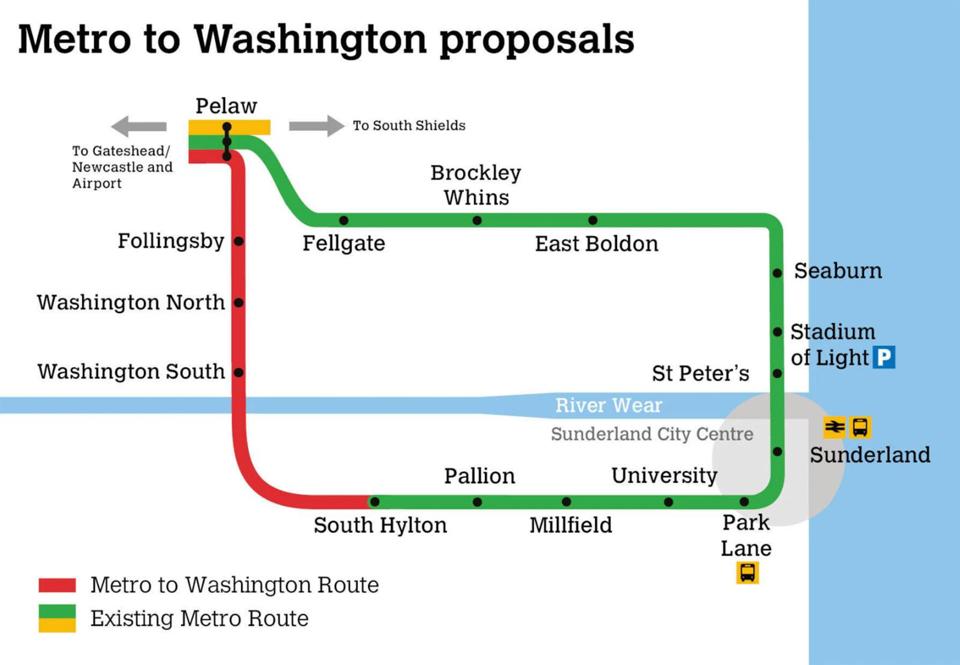

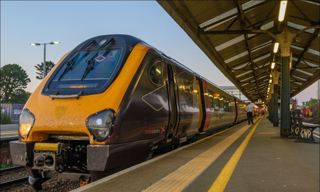
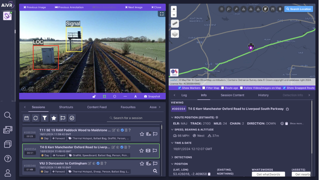
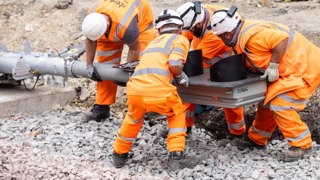
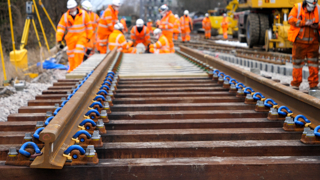










TCW - 04/07/2025 12:44
There is no need for an "east-to-north chord at Penshaw". It would be musch easier and more cost effective to run the track along the old track bed to Penshaw and then reverse out again (as currently happens at South Hylton), along the Leamside line, to the Victoria Viaduct. All the relevant ground is already owned by either Network Rail or Sunderland Council. The ground drops from 39m elevation (at the southern end of the viaduct) to 25m before rising to 39m again on the way to Coxgreen. The chord would need an embankment or bridge about 300m long, on greenfield land, which can be completely avoided by going to Penshaw first. A station at Penshaw would have the added advantage of providing Metro access to about 20,000 people living in Penshaw, Mount Pleasant, Fatfield, Shiney Row, New Herrington, Philadelphia, West Herrington, Biddick Woods and Elba Park, for whom the South Hylton and Washington South (proposed) stations are much too distant to be of any use, and this would be the only new station south of the river. The slight increase in distance would be more than offset by avoiding the need for compulsory land purchases and the building of a bridge or embankment 300m long and up to 15m high. There would also be synergies with the reopening of the Leamside line (if that ever happens) since that unavoidably has to pass through Penshaw anyway. The track configuration just described is how it was from 1852 until 1964, when it proved to be fit for purpose.